Harvesting Tomato Plants: This Is How To Get As Many Ripe Fruits As Possible
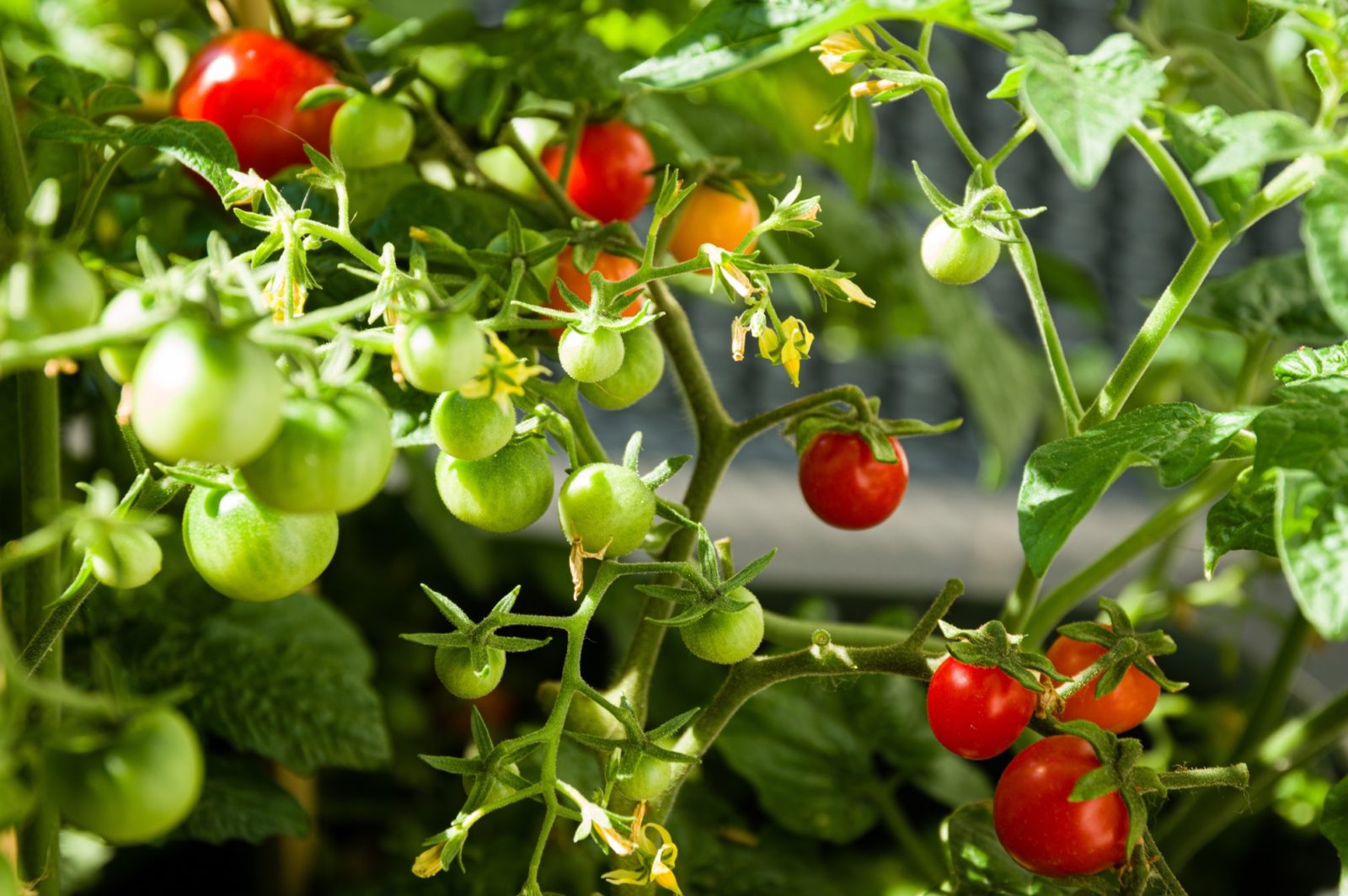

Elizabeth is a Permaculture Garden Designer, Sustainability Consultant and Professional Writer, working as an advocate for positive change. She graduated from the University of St. Andrews with an MA in English and Philosophy and obtained a Diploma in Applied Permaculture Design from the Permaculture Association.
Reviewed By PETER LICKORISH

Peter is a Horticulture Lecturer and self-employed Horticulturist, with a passion for diverse areas of the industry - from garden design to the science behind plant growth and propagation. He has completed the Royal Horticultural Society’s Master of Horticulture (MHort) Award and lectures on RHS courses at Bedford College.
Contributions From LUCY HUTCHINGS , GERALD STRATFORD

Gerald Stratford has been growing his own veg since the age of 4. He is the author of ‘Big Veg’ and is hailed as ‘The King Of Veg’ by his audience - with almost 500,000 keen followers across his various social accounts.

Janice Shipp is a Writer with 15 years' experience as Principal Researcher for Which? Gardening magazine. She has received her RHS MHort and City and Guilds Planting Design qualifications and is a member of the RHS Herbaceous Plant Committee. Janice is also a member of both the Garden Media Guild and Chartered Institute of Horticulture - and was Chair of forum on a Penstemon trial for the Royal Horticultural Society.
IN THIS GUIDE
TOMATO GUIDES
Disposal
Feeding
Growing From Seed
Growing In Hanging Baskets
Harvesting
Problems
– Not Setting Fruit
Pruning
Yellow / Orange Varieties
– Roma
– Sungold
– Alicante
– Moneymaker
– Gardeners Delight
Tomatoes are one of the most popular garden, greenhouse or polytunnel crops to grow in the UK and they can be a very satisfying crop to grow.
“I think tomatoes are a really rewarding plant to grow because they are very fast-growing and productive, so you can become fairly self-sufficient on tomatoes, whereas that’s harder to do on certain crops,” shares Lucy Hutchings, Gardener Designer and Co-Director of She Grows Veg.
However, due to the variation in British summers, it can sometimes feel as though growing tomatoes in the UK is a race against time, as we aim to harvest ripe fruits before the end of the growing season.
Knowing when to harvest your tomatoes is important, but it can also be useful to think about the steps we take during the harvesting period to ensure we get as many ripe fruits from our tomato plants as possible.
Read on to find out everything you need to know about harvesting tomatoes:
| Difficulty | Easy |
| Equipment Required | Collection vessel |
| When To Harvest | July – September |
When To Harvest
When you will be able to start harvesting tomatoes will of course depend on the variety or varieties that you have chosen to grow.
Some types will start to ripen far earlier than others, and others will take far longer to mature.
Smaller, cherry-type tomatoes and early tomato types are among the fastest to ripen, while larger tomatoes, like beefsteak tomatoes, for example, will take a lot longer.
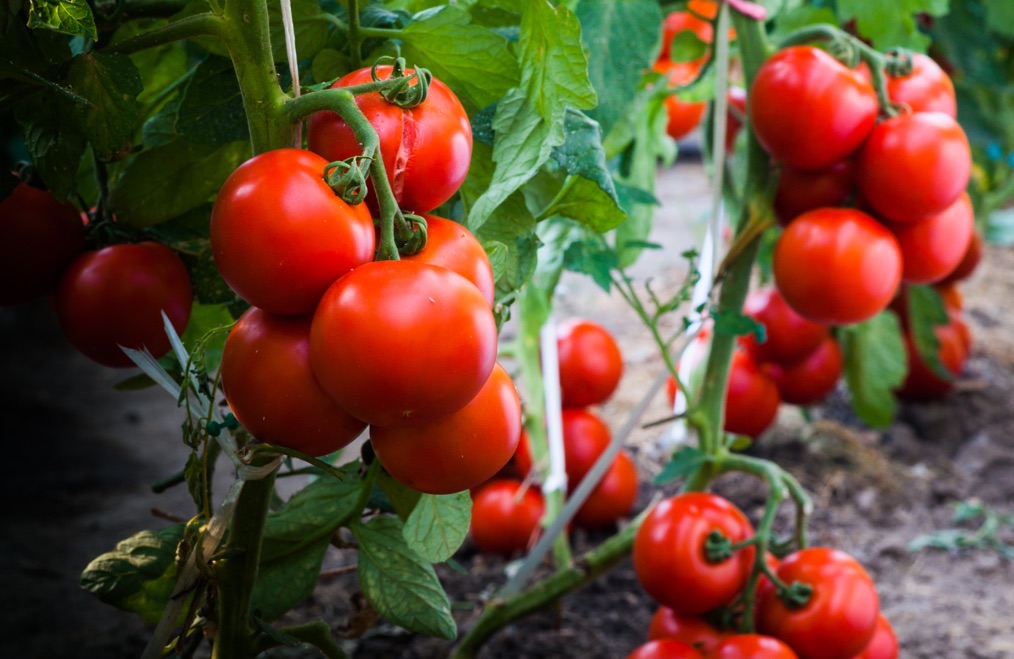
It is worthwhile when choosing tomatoes, to familiarise yourself with the time-to-harvest for the particular cultivar that you have chosen, so you have some idea about when you can expect your fruits.
Naturally, the harvest period for tomatoes also depends on when you sowed and planted your crop.
To stand the best chance of a worthwhile harvest before the end of the growing season in the UK, it is a good idea to start seeds early, indoors.
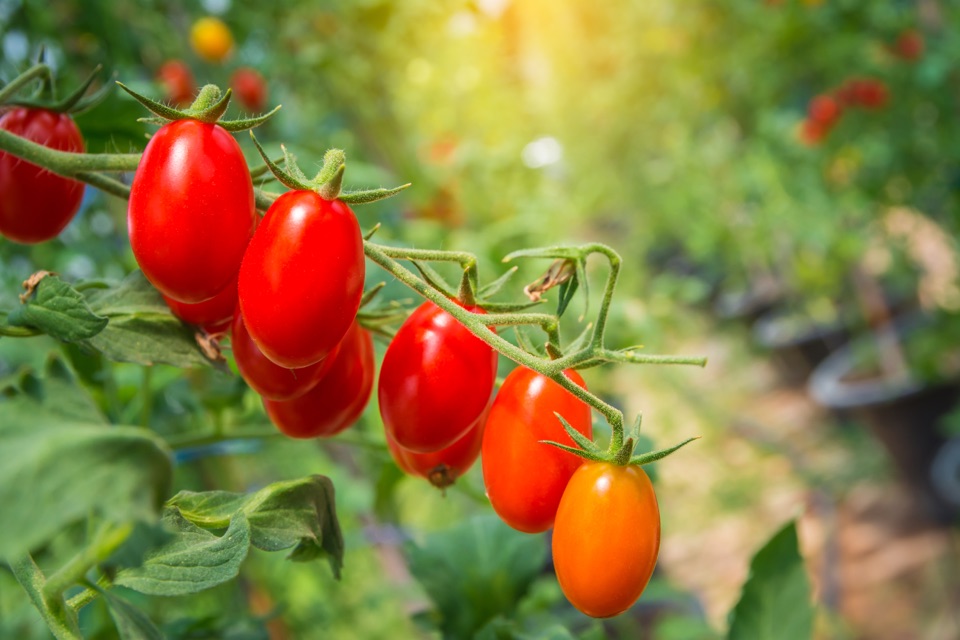
If you are growing in a greenhouse or polytunnel, rather than outdoors, this will also typically mean that you are able to begin harvesting tomatoes just a little bit earlier.
This way you can start sowing as early as February.
You may be able to start harvesting tomatoes from July and should usually be able to continue to do so until September, or perhaps even October if you are growing them undercover.
How To Know When Tomatoes Are Ready
Many tomatoes will be ready to harvest when they are fully red, but, of course, not all tomatoes turn red in hue when they are ripe.
Tomatoes come in a range of different colours and not all will become red when they are ready.
With some types, identifying the ripe fruit will not be as easy as looking for the bright red hue.

You are looking also, for firm, plump and glossy fruits that are almost but perhaps not entirely mature.
Fruits that are left to completely ripen on the vine will typically be the sweetest, but tomatoes will continue to ripen off the plant once they near the ripened stage.
Picking them just a little before they reach peak maturity (and before they pass this peak) can help make sure you definitely don’t waste any fruit.
The Harvesting Process
The actual process of harvesting tomatoes could not be easier.
Make sure that you check over your plants regularly to identify any fruits that are nearing full ripeness or that are fully mature.
Whenever you see ripe fruits on the plants, simply pluck these from the plant, breaking them off through the stem just above the calyx at the top of the fruit.
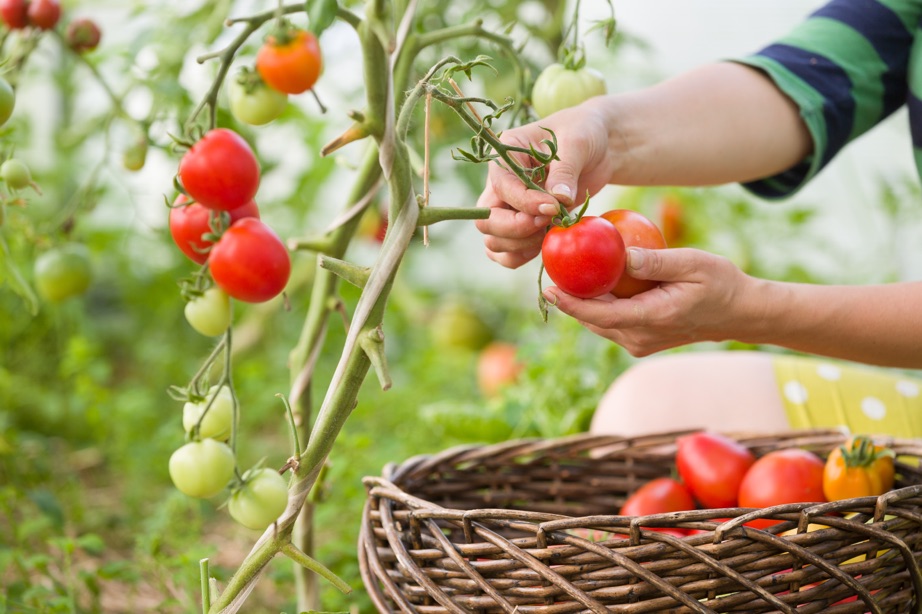
This is usually easy to do by hand, but if you wish you can use a pair of gardening scissors.
“Harvesting tomatoes is a delicate affair, as heavy trusses laden with fruit are easy to accidentally snap,” says Horticultural Consultant Peter Lickorish.
So if, like me, you don’t have the hands of a surgeon, keep a pair of sharp garden scissors for the job. I find this is preferable to plucking fruit, to make it easier to keep the calyx and help them to be stored longer.”
Place the fruits you harvest into a collection vessel, making sure to place them carefully so they do not get bruised.
Make sure that you harvest ripe fruits as they appear so production will continue.
Encouraging Green Tomatoes To Ripen
As tomatoes (and many other fruits) ripen, they give off ethylene gas, and this helps other tomatoes to ripen.1Sargent, S. (n.d.). Ripening Tomatoes With Ethylene. University of Florida. Retrieved March 27, 2023, from https://ufdcimages.uflib.ufl.edu/IR/00/00/46/98/00001/CV20600.PDF
Placing any other ripening fruits, such as apples from an apple tree or pieces of banana, below tomatoes will encourage green tomatoes to ripen on the vine before the end of the season.
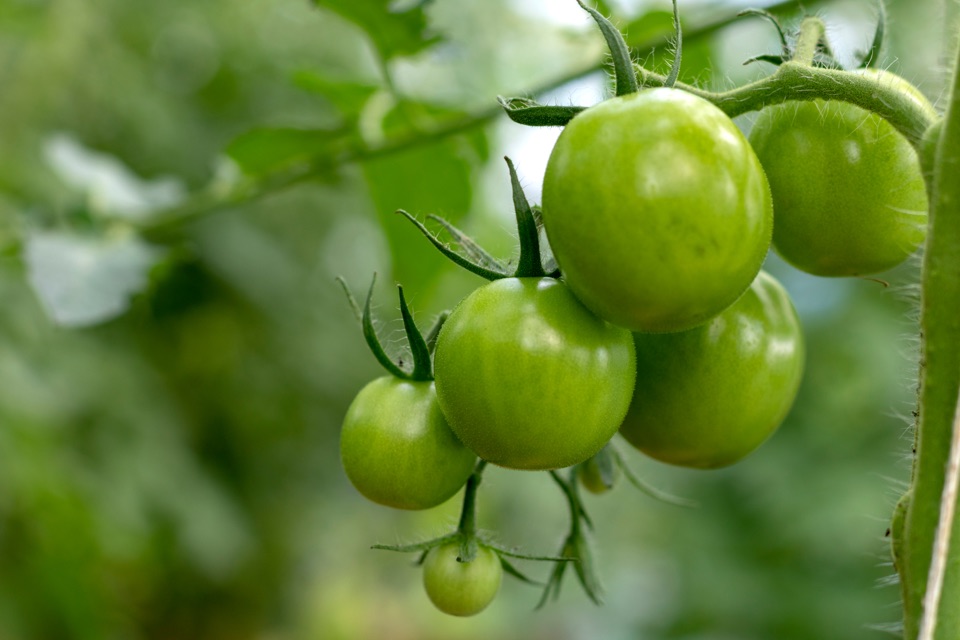
To ripen green tomatoes you can also:
- Increase temperatures and concentrate ethylene gas by covering your crop with a cloche or row cover.
- Cut back lower foliage and cut off any flowers and small fruits that don’t have a chance of reaching maturity as the end of the growing season approaches (this encourages the plant to focus on ripening remaining fruits).
- Put plants under stress by reduced watering or by tugging gently to loosen the roots of the plant, as when they are stressed, tomato plants will be ‘shocked’ into rushing to ensure propagation.
What To Do With Unripe Fruits
Though you can potentially get a few more ripe tomatoes by taking the steps above, you will likely still be left with some green fruits at the end of the growing season.
You don’t need to worry, however, because you can still harvest slightly under-ripe tomatoes and have these ripen indoors.
You can also use green tomatoes to make green tomato salsa or use them in a number of other recipes.2Fennell, L. (n.d.). Green tomato salsa/smoked tomato ketchup. BBC Food. Retrieved March 27, 2023, from https://www.bbc.co.uk/food/recipes/green_tomato_salsa_53906
“I wouldn’t be without tomatoes (always a blight resistant variety) as they are essential for pasta sauces,” says Janice Shipp, a Garden Writer.
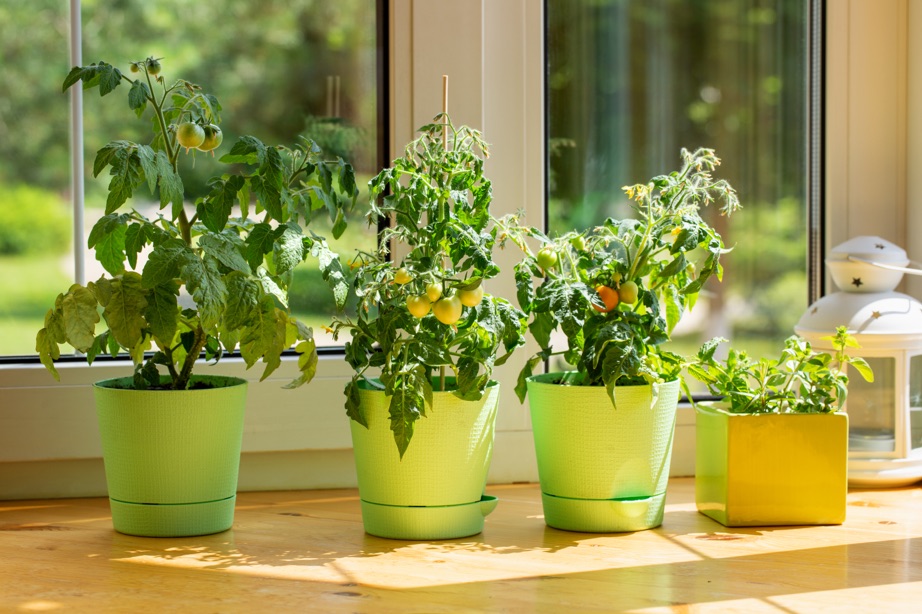
If you have plants with quite a few green fruits nearing maturity but not quite there, you can also, at the end of the season, pull up the whole vine and bring it indoors for the fruits to ripen.
Somewhere relatively warm with good light, but not strong direct sunlight, is ideal. Plants could be hung in a porch, for example.
Placing the tomatoes off the vine in a warm, dark place with ripening fruits that give off ethylene gas will improve the chances that these remaining fruits will ripen successfully.
Traditionally drawers or paper bags are used.
Storing & Preserving
The ripe tomatoes that you harvest throughout the season are best used as quickly as possible when their flavour will be at its best.
“Sometimes, tomatoes will split when washed after picking, in which case, you should try to use them as soon as possible,” adds Peter.
Of course, how precisely you use your tomatoes will depend on which varieties you are growing.
“At this time of the year, we’re eating everything,” shares Gerald Stratford, the author of Big Veg.
“My partner makes chutneys and jams with all of the fruit and vegetables, but if there’s a surplus, as there will soon be with tomatoes, we will store them.”
“Over the last couple of years, we’ve started using a dehydrator. You slice the tomato, put it in the machine for around 12-14 hours and it dries them without taking away the taste.
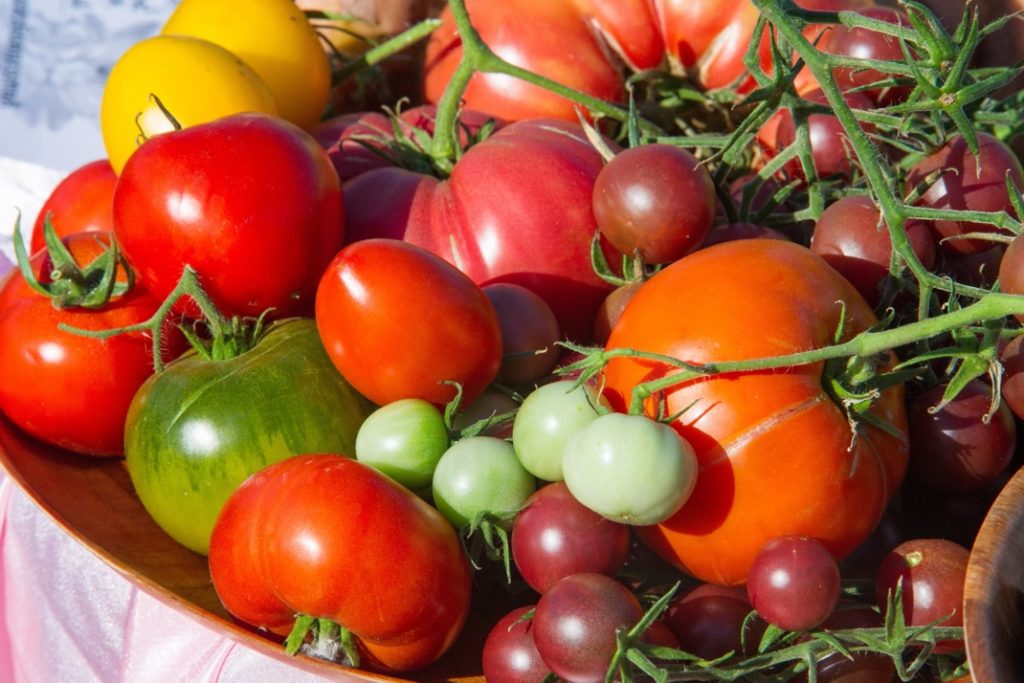
“We put these tomatoes in a small jar, top it up with olive oil and pop the lid on.
We will then use these tomatoes to make the base of pizzas that we like to eat every week. It’s divine – there’s nothing like it.”
If you have too many, you might also:
- Freeze tomatoes for later use
- Dry tomatoes (in a dehydrator or your oven)
- Try canning, with a water bath canner, to make tomato sauces
“With tomatoes, you can shove them in the freezer without having to sauce them,” shares Lucy.
“This means that you can grow enough tomatoes for a family of 4 to be self-sufficient for the whole year, which is exciting.
“With most crops, that feels quite unachievable, but with tomatoes, it’s quite easy to do.”
References
- 1Sargent, S. (n.d.). Ripening Tomatoes With Ethylene. University of Florida. Retrieved March 27, 2023, from https://ufdcimages.uflib.ufl.edu/IR/00/00/46/98/00001/CV20600.PDF
- 2Fennell, L. (n.d.). Green tomato salsa/smoked tomato ketchup. BBC Food. Retrieved March 27, 2023, from https://www.bbc.co.uk/food/recipes/green_tomato_salsa_53906

